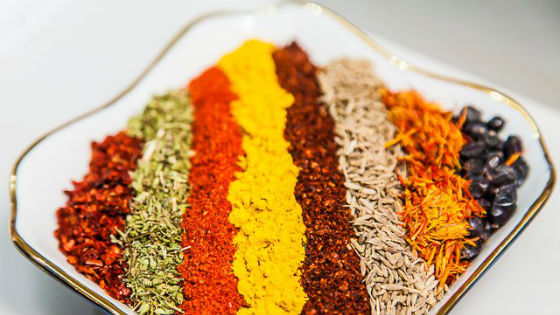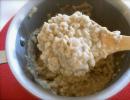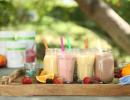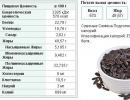Detailed menu of a salt-free diet for 14 days
The salt-free diet is one of the most popular methods in the world. In just 2 weeks, you can remove from 8 extra pounds. The diet involves not just the rejection of salt, as many people conclude from the name, but the strict alignment of the nutrition system itself. The diet consists of affordable and simple products, it is relatively varied, simple, but not always satisfying. There are important rules, the observance of which will give a guaranteed result.
Content:
The mechanism of action of salt-free diets
There are a lot of salt-free diets, they differ in duration, menu variety, and complexity. All systems are geared towards water loss. The body begins to quickly remove excess fluid, volumes are reduced, weight is reduced. Even when eating ordinary foods, you can see changes. But it will be difficult to keep the results achieved with illiterate nutrition. To really lose weight, you need to cut calories. Only in this case, after the water, the fat layer will begin to leave.
The second important factor is the compilation of a menu of useful, helping products. They should contain protein and fiber, which will also help cleanse the body and maintain muscle mass. You can not use during the diet synthetic food and additives that complicate the work of the digestive and excretory systems.
Advantages and disadvantages of a salt-free diet
The main advantage of the diet is rapid weight loss. With the exclusion of salt from the diet, absolutely all people lose weight. The number of kilograms dropped directly depends on the excess fluid in the body, as well as the initial data. The biggest losses occur in the first 3-5 days. Further, the intensity decreases, but there is a direct burning of fat. That is why you should not choose short-term diets, the duration of which does not exceed 7 days.
Other pluses:
- Designed diet menu. Nothing needs to be considered, invented, composed.
- Simple products. The basis of the diet consists of affordable, easy-to-prepare dishes.
- The load on the internal organs is reduced: the liver, kidneys, cardiovascular system.
- Swellings and volumes go away, the body quickly tightens.
A salt-free diet for 14 days is varied, but difficult to tolerate. Fresh dishes are not to everyone's taste, which is a significant disadvantage. It is difficult to eat 200 g of meat or fish at a time without the usual spices, the taste is distorted over time. Another disadvantage of this system is the partial return of fluid, which cannot be avoided with the introduction of salt.
Video: Elena Malysheva about salt
Basic Rules
Do not confuse days, the effectiveness of a salt-free diet is reduced. It is forbidden to arbitrarily replace one product with another, even with its lower fat or calorie content. You should study the diet in advance. If you are intolerant to the main dishes, you should abandon the diet.
All rules:
- Regular water intake. On a salt-free diet, the body loses fluid and it is very important to replenish it. All 14 days you need to drink at least 2 liters per day.
- Exclusion of sugar, soy sauce. You should also pay attention to ready-made seasonings, which often contain salt.
- Exclusion of products with starch, only carrots and cabbage are allowed from vegetables.
- Exclusion of all drinks, except coffee, green tea, pure water. Mineral water on a salt-free diet is prohibited.
Worth remembering: There is no need to fear that the exclusion of salt will adversely affect the body. In small quantities, it is contained in all products; in 14 days, a serious disorder cannot happen.
Dishes and products of a salt-free diet
Coffee is consumed daily, it must be brewed by yourself, you can not add sugar, milk or cream. The strength can be adjusted according to your taste. Cup size - 150 ml. If there are no health problems and you need to cheer up, then you are allowed to drink 2 servings.
![]()
What you can eat:
- Meat. It is worth giving preference to lean beef, veal. Exclude pork, lamb, goat meat from the diet.
- Chicken. Use white meat from the breast or thigh, but it is advisable to remove the skin. Can be substituted with turkey.
- Cabbage. Initially, white-headed varieties were present in the salt-free diet. But it is not forbidden to use red types of cabbage, kohlrabi. Vegetables are consumed fresh.
- Carrot. Can be consumed fresh or boiled. The first option is preferable, since there is more fiber in the raw root crop.
- Fish. The variety and degree of fat content do not matter; you can choose river or sea species. It is also allowed to replace seafood.
- Natural yogurt. Can be replaced with kefir or cottage cheese up to 5% fat.
- Fruit. Only fresh fruits with a low sugar content are used: apples, pears, plums. Berries, bananas, dates, dried fruits should not be consumed.
- Tomato juice. The drink should be drunk without salt, it is advisable to cook it yourself. But you can replace the same amount of fresh tomatoes.
All dishes of a salt-free diet should be prepared in dietary ways: boiling in water or steaming, grilling or in the oven without the use of oil is allowed. But it can be added to cabbage and carrot salads at the rate of 1 tsp. for one meal. It is advisable to choose healthy fats, for example, linseed oil, olive oil.
Important! Broths after cooking fish or meat should not be consumed. It will not be able to saturate the liquid, but it contains unnecessary fat.

Detailed menu
The salt-free diet menu is designed for exactly a week, then from the 8th to the 14th day the circle is repeated, following all the same rules. If breakfast is not indicated on any day, then it consists only of a cup of black coffee. It is not recommended to consume instant drinks, as they often contain additives in the form of fried cereals.
First day
Dinner: 2 eggs, coleslaw, 200 ml tomato juice
Dinner: boiled fish, coleslaw
Second day
Breakfast: cracker or bran bread, coffee
Dinner: 200g steam fish, coleslaw (unlimited)
Dinner: 200 g beef, 100 ml yogurt
Third day
Dinner: 2 eggs, orange, vegetable salad
Dinner: 200 g meat, 300 g cauliflower
Fourth day
Dinner: 3 carrots, egg
Dinner: unsweetened fruits (unlimited)
Fifth day
Breakfast: carrot salad with lemon juice
Dinner: 300 g fish, 200 ml tomato juice
Dinner: 200 g chicken, coleslaw

Sixth day
Breakfast: cereal, coffee
Dinner: 200 g chicken breast, carrot salad
Dinner: 2 eggs, fresh cabbage
Seventh day
Breakfast: tea, cracker
Dinner: 200 g fish, 2 carrots
Dinner: 200 g chicken, fresh cabbage with lemon juice
How to diversify the diet of a salt-free diet
The exclusion of salt is not a reason to refuse delicious dishes. With the right approach, even a boring diet can be varied. It is forbidden to use salt and sugar, but not other spices.
What can be used:
- fresh and dried herbs, including Provence herbs;
- lemon juice;
- spices (vanilla, cinnamon, cloves);
- spices (pepper, ginger in any form, coriander).
Meat, poultry, fish can be marinated in advance before baking or stewing, the dish will turn out tastier, the diet is more fun. Fresh vegetable salads are also allowed to season with spices, lemon juice. Salads, smoothies with the addition of cinnamon and other spices are prepared from fruits, which are allowed with a salt-free diet.

Diet Contraindications
A salt-free diet is contraindicated in unstable blood pressure. Drinking natural coffee daily for 14 days can worsen the situation. The drink should not be taken with any cardiovascular disease.
Other contraindications to a salt-free diet:
- diseases of the liver, kidneys;
- pregnancy;
- childhood;
- diseases of the gastrointestinal tract.
If you have any chronic diseases, you should consult your doctor before following a salt-free diet. Due to the low calorie content of the diet, you should not adhere to the above diet for more than 14 days. It is undesirable to use this method for weight loss in the summer, when the body needs more salt than usual.
Video: Is it worth it to completely give up salt





